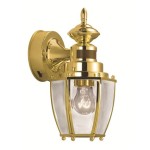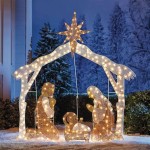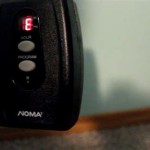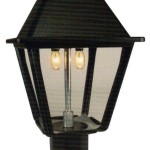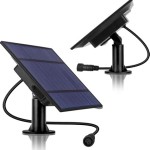Outdoor Junction Box Requirements: Ensuring Electrical Safety and Longevity
Outdoor junction boxes are critical components of electrical systems exposed to the elements. They provide a safe and reliable enclosure for connecting and protecting electrical wires, splices, and devices operating outdoors. Correct installation and adherence to relevant codes are essential for preventing electrical hazards, ensuring the longevity of the electrical system, and maintaining compliance. This article will explore the key requirements for outdoor junction boxes, focusing on material selection, installation practices, and applicable regulations.
Weatherproof Rating and Enclosure Type
One of the most crucial considerations for outdoor junction boxes is their ability to withstand environmental conditions. This is primarily determined by the National Electrical Manufacturers Association (NEMA) rating, which defines the level of protection offered against various elements, including water, dust, ice, and corrosion. For outdoor applications, a NEMA 3R or higher rating is generally required. A NEMA 3R enclosure protects against rain, sleet, snow, and the formation of ice, while also providing a degree of protection against windblown dust. Other NEMA ratings, such as NEMA 4 or NEMA 4X, offer even greater protection against more severe conditions, such as hose-directed water or corrosive environments.
The selection of the appropriate NEMA rating should be based on the specific environmental conditions at the installation site. Factors to consider include the amount of rainfall, exposure to direct sunlight, proximity to saltwater or corrosive chemicals, and the potential for ice formation. In areas with heavy rainfall or frequent flooding, a NEMA 4 or 4X enclosure would be more suitable than a NEMA 3R enclosure. Similarly, in coastal areas or industrial environments where corrosive substances are present, a NEMA 4X enclosure made of corrosion-resistant materials, such as stainless steel or fiberglass, is highly recommended.
The enclosure type is also a significant factor. Common enclosure materials include metallic boxes made of steel or aluminum, and non-metallic boxes made of PVC or fiberglass. Metallic enclosures offer robust protection against physical damage and are often preferred in areas where the box may be subjected to impact or abrasion. However, metallic enclosures are susceptible to corrosion, especially in damp or salty environments. To mitigate this, metallic enclosures should be properly coated or painted with a corrosion-resistant finish. Non-metallic enclosures, on the other hand, are inherently resistant to corrosion and are therefore well-suited for outdoor applications where corrosion is a concern. They are also lightweight and easy to install. However, non-metallic enclosures may be less resistant to physical damage than metallic enclosures.
Furthermore, the enclosure must be sized appropriately for the number and size of conductors, splices, and devices it will contain. Overcrowding the enclosure can lead to overheating, insulation damage, and difficulty in making proper connections. The National Electrical Code (NEC) provides guidelines for calculating the required box fill, taking into account the volume of the box, the number and size of conductors, and the presence of any internal devices, such as switches or receptacles.
Proper Installation and Sealing
Even the highest-rated junction box will not provide adequate protection if it is not installed correctly. Proper installation practices are crucial for maintaining the integrity of the enclosure and preventing water and other contaminants from entering. This includes ensuring that the box is securely mounted, all openings are properly sealed, and the wiring is correctly terminated.
The junction box should be mounted on a stable and secure surface, such as a wall, post, or other suitable structure. The mounting method should be appropriate for the type of enclosure and the weight of the contents. For metallic enclosures, grounding is essential to prevent electrical shock hazards. The enclosure should be grounded to the equipment grounding conductor, following the guidelines in the NEC. This ensures that any fault current will safely return to the source, tripping a circuit breaker or fuse and preventing a hazardous condition.
All unused openings in the junction box must be sealed with appropriate plugs or fittings. These plugs and fittings should be specifically designed for outdoor use and should be resistant to water, dust, and corrosion. The use of inappropriate or makeshift sealing methods can compromise the integrity of the enclosure and allow contaminants to enter. Conduit entries should be properly sealed with weatherproof connectors or hubs. These connectors should be listed for outdoor use and should provide a watertight seal around the conduit. It is crucial to follow the manufacturer's instructions for installing these connectors to ensure they are properly seated and tightened.
The wiring inside the junction box should be neat and organized, with all connections properly made and insulated. Wire connectors should be rated for the size and type of conductors being used and should be installed according to the manufacturer's instructions. Splices should be made using approved methods, such as crimp connectors or twist-on wire connectors, and should be properly insulated with electrical tape or heat-shrink tubing. Loose or poorly made connections can lead to overheating, arcing, and even electrical fires. The NEC specifies the types of wiring methods that are approved for outdoor use, and these methods should be followed to ensure compliance and safety.
Drainage is another important consideration for outdoor junction boxes. Condensation can form inside the enclosure due to temperature changes, and this moisture can damage electrical components or cause corrosion. To prevent this, many outdoor junction boxes are equipped with drain holes or vents. These features allow moisture to escape from the enclosure while preventing water from entering. If the junction box does not have built-in drainage features, it may be necessary to drill small drain holes in the bottom of the enclosure, taking care to avoid damaging any internal components.
Compliance with National Electrical Code (NEC) and Local Regulations
The National Electrical Code (NEC) provides comprehensive guidelines for the safe installation of electrical systems, including outdoor junction boxes. Compliance with the NEC is essential for ensuring the safety of people and property, and it is often required by local building codes. Local regulations may also impose additional requirements beyond those specified in the NEC, so it is important to be familiar with the applicable codes and standards in the jurisdiction where the installation is taking place.
The NEC addresses various aspects of outdoor junction box installation, including the type of enclosure required, the grounding requirements, the wiring methods permitted, and the spacing requirements. For example, the NEC specifies the minimum depth of burial for underground wiring, the type of conduit that must be used, and the requirements for protecting conductors from physical damage. It also addresses the requirements for installing junction boxes in hazardous locations, such as areas where flammable gases or vapors may be present.
Local building codes may also impose additional requirements for outdoor junction boxes. These requirements may vary depending on the specific location and the type of installation. For example, some jurisdictions may require that all outdoor junction boxes be inspected by a qualified electrical inspector before they are put into service. Others may have specific requirements for the type of conduit that must be used or the type of grounding system that must be installed.
It is the responsibility of the installer to be familiar with the applicable codes and standards and to ensure that the installation complies with all requirements. Failure to comply with these requirements can result in fines, delays, and even the rejection of the installation. In some cases, non-compliant installations can also pose a significant safety hazard, potentially leading to electrical shock, fire, or other serious injuries.
To ensure compliance, it is advisable to consult with a qualified electrical contractor or inspector before beginning the installation. These professionals can provide valuable guidance on the applicable codes and standards and can help ensure that the installation is performed safely and correctly.
Beyond the NEC focusing on safety, energy efficiency standards may also influence the selection and installation. Some energy-efficient lighting systems, for example, require specific types of junction boxes to accommodate their wiring and control systems. Staying informed about current energy codes is important for ensuring that the entire outdoor electrical system operates efficiently.
Proper documentation is vital. Maintain records of all electrical work, including permits, inspections, and material specifications. These records serve as proof of compliance and can be useful for future maintenance or modifications to the system. Electrical diagrams and schematics should accurately reflect the as-built condition of the outdoor electrical wiring and junction box placement.

Outdoor Junction Boxes Waterproof Electrical

Junction Boxes How Do They Protect Outdoor Electronics

Vevor Electrical Enclosure 8 In X 6 Nema 4x Steel Junction Box Reinforced Lock And Hinge Outdoor Wall Mount Dqxjstcfs20x20x15v0 The Home Depot

Vevor Electrical Box Enclosure 12x12x8 Nema 4x Ip65 Outdoor Junction Carbon Steel Hinged With Rain Hood For Indoor Tul30x30x20cmfm0nv0 The Home Depot

Knightsbridge Ml Outdoor Junction Box Fixings Warehouse

Ip68 Pc Material V1 Plastic Waterproof Box Outdoor Junction Uv Protection Housing 134 66mm Ak Bw 08

Ip66 Black Junction Box Weatherproof Square Outdoor

Waterproof Electrical Junction Box Outdoor Enclosure Ip65 Boxes Cable Connector Abs Plastic Project Case 63 X 58 Fruugo No

Nema 4x Ip66 Non Metallic Electrical Junction Boxes Omega

Vevor Electrical Enclosure Box 12 X 6 In Nema 4x Ip65 Junction Carbon Steel Hinged With Rain Hood For Outdoor Indoor Tul30x30x15cm7wshv0 The Home Depot
Related Posts

